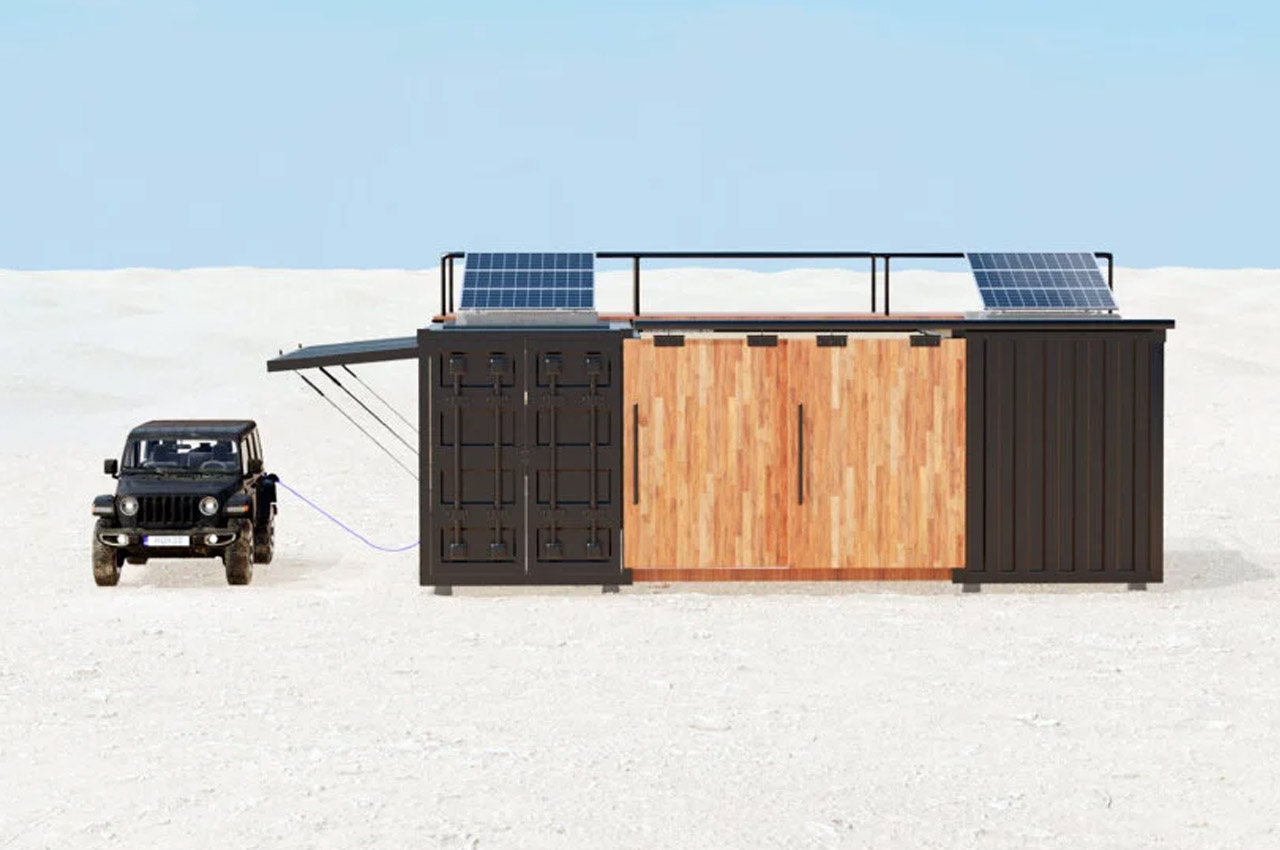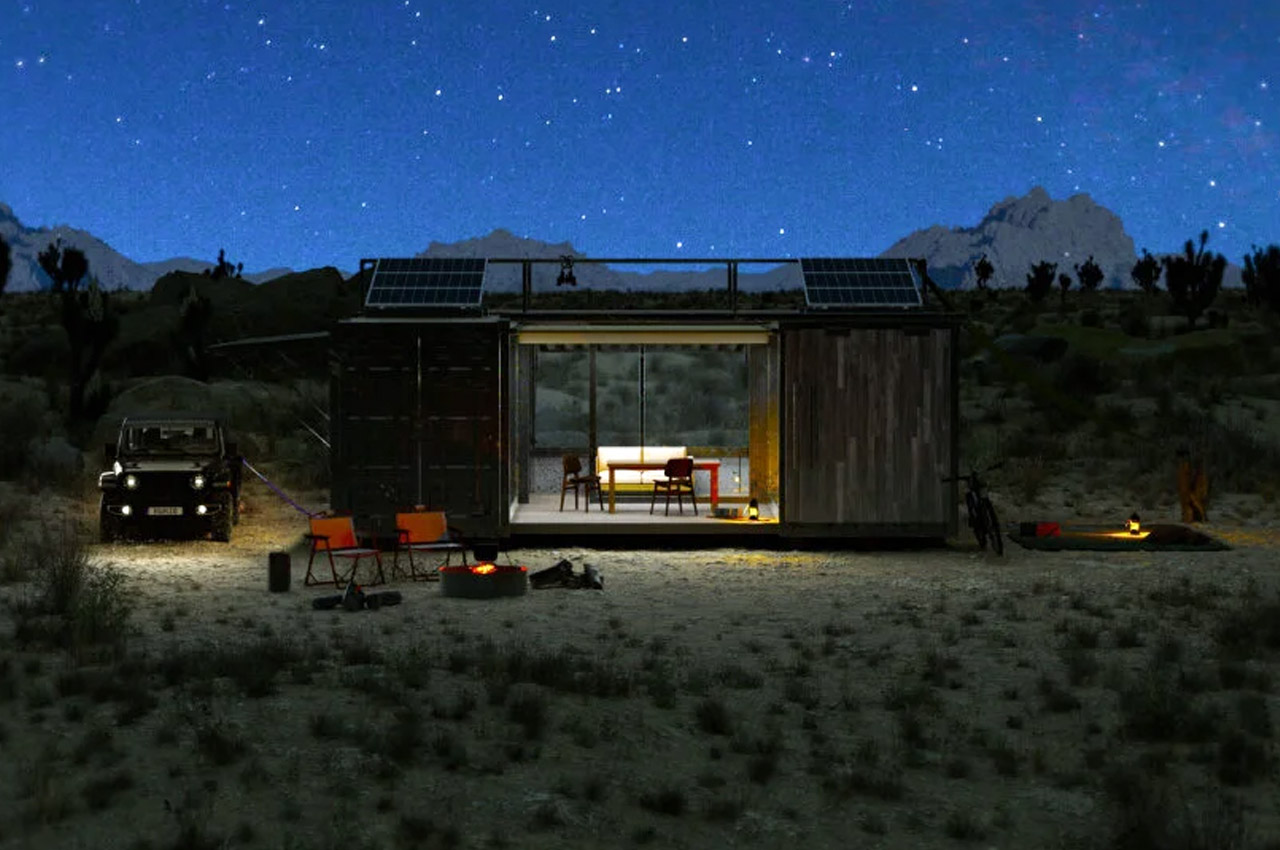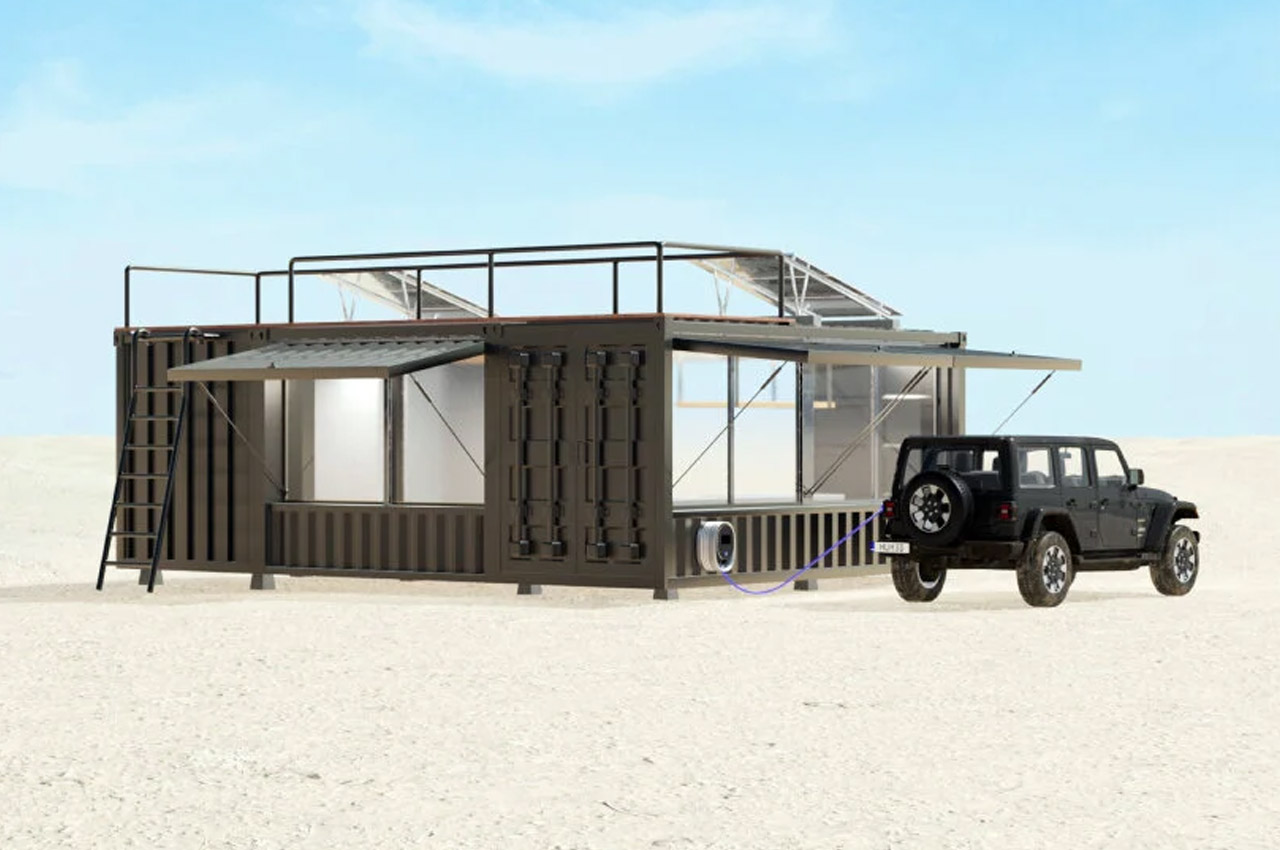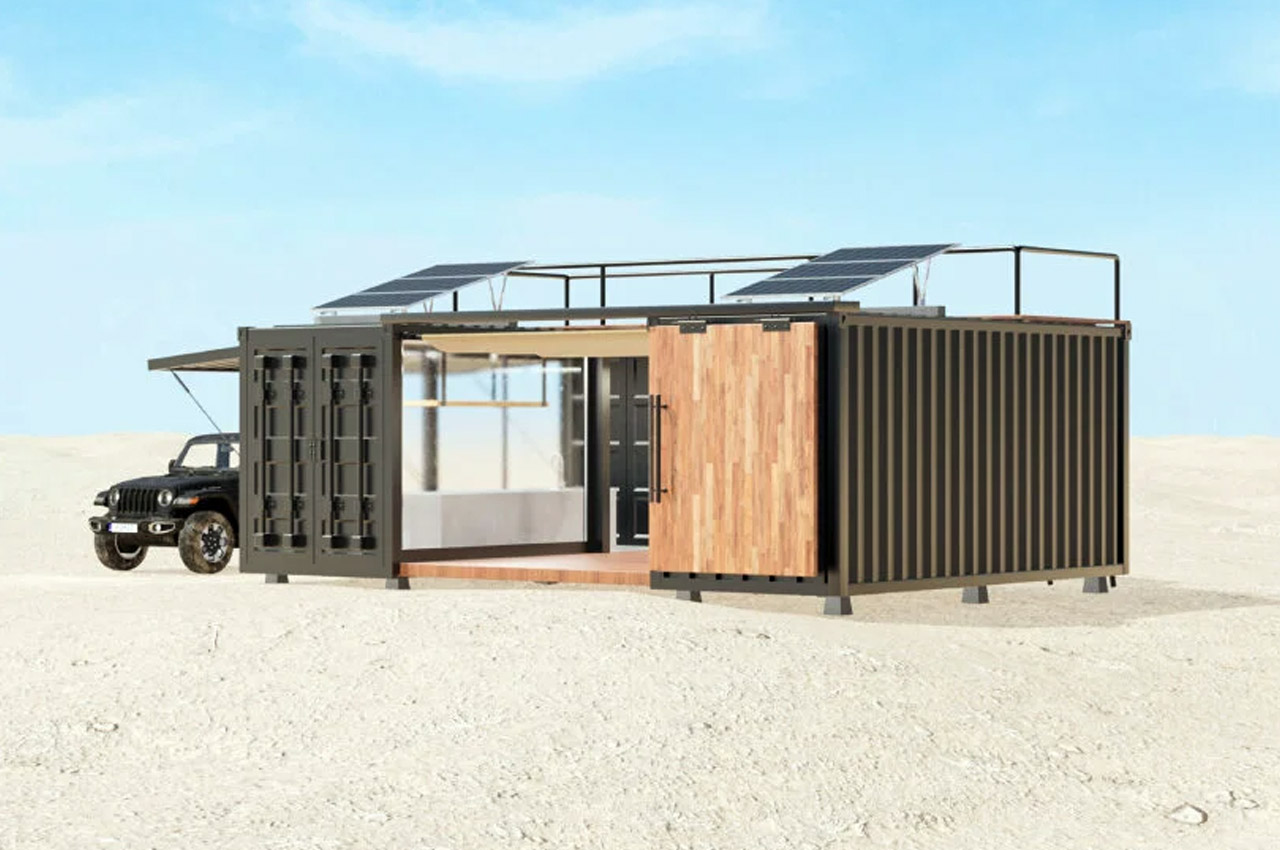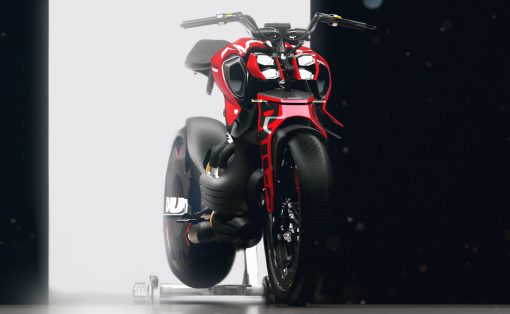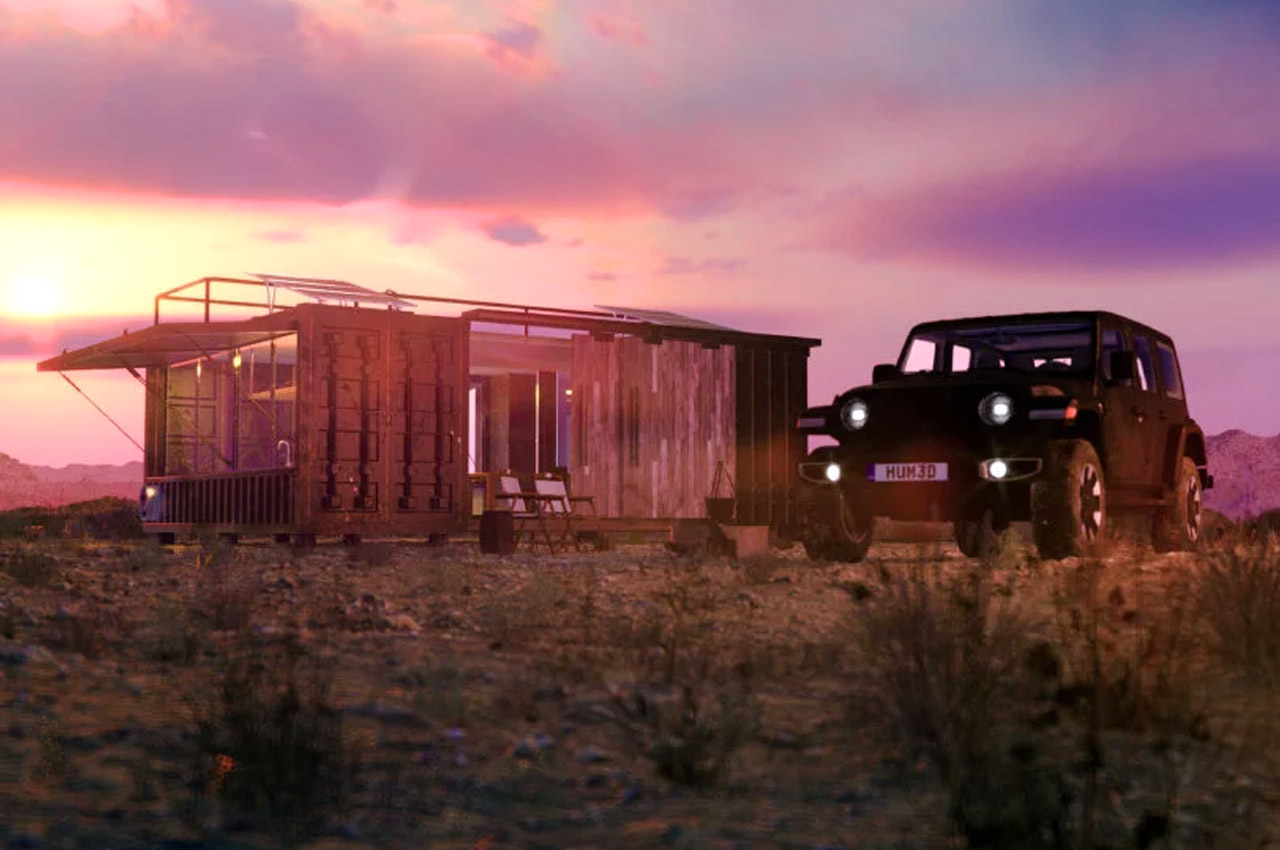
The idea of trailer homes is here to stay as we’ve seen in the last couple of years. The nomadic lifestyle is fast catching up with the masses and that has triggered a number of creators who want to cater to the needs of adventure seekers across the globe.
Jeep Japan too wants to jump on board this juggernaut, and cash in on the trend with this traveling house, Jeep Container Home. Just as the name suggests, the whole package is an expansive-looking house that goes where the Jeep goes. What makes it different from the other trailer homes is that can be hooked onto a 4×4 MUV – well, it doesn’t ride on wheels and is completely assembled on-site.
Designer: Jeep Japan
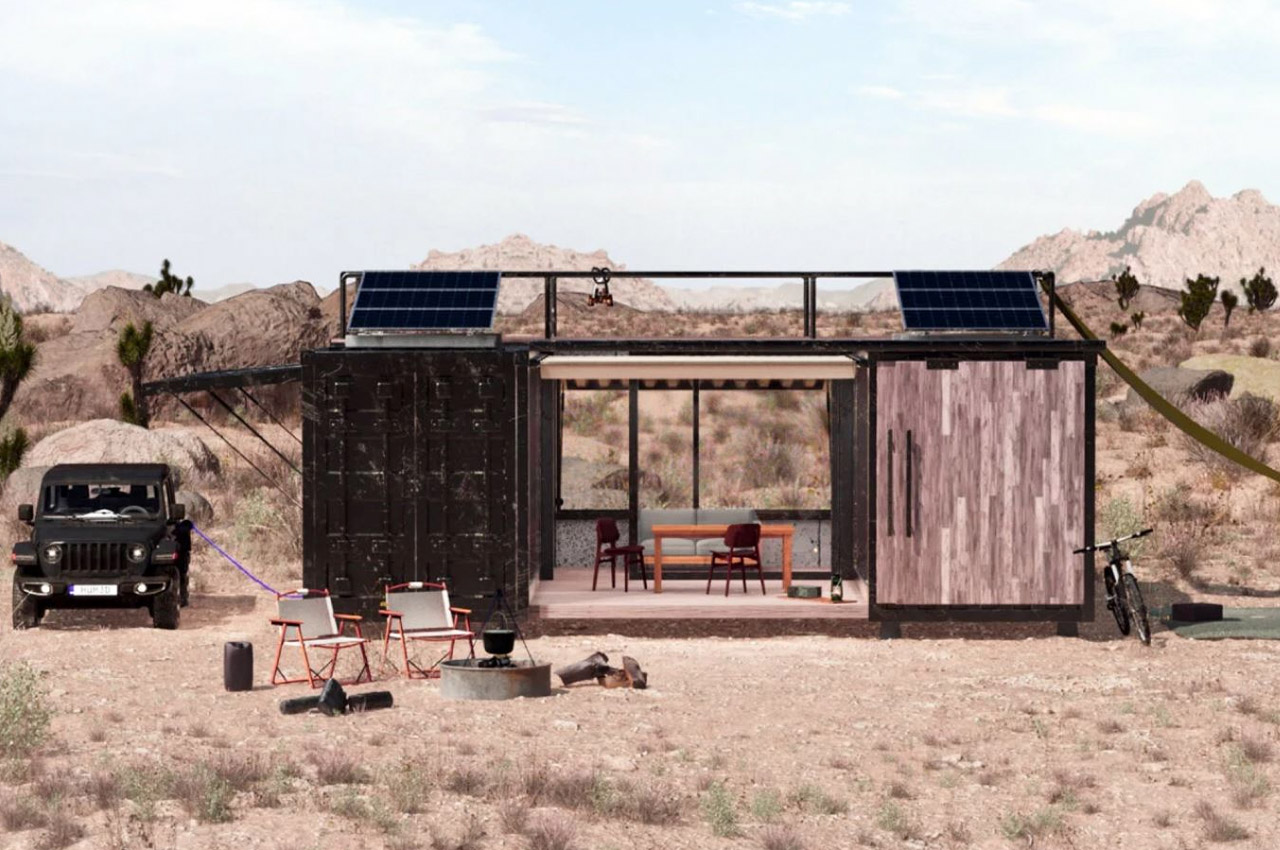
Jeep Container Home is basically a house ready to pack up and set up at the desired location with little effort. Surely, this one is not as easy to move as a tiny house on wheels or tent – still there are good merits. Compared to container homes, the Jeep’s concept home has sides that open up to the views and a skylight that brings a sense of airiness. Sliding the wooden barn doors opens up the interiors to the outside view and the windows come to view when the iron shutters are opened. For extended stays at one location, there’s the option to install glazing and solid shutters too.
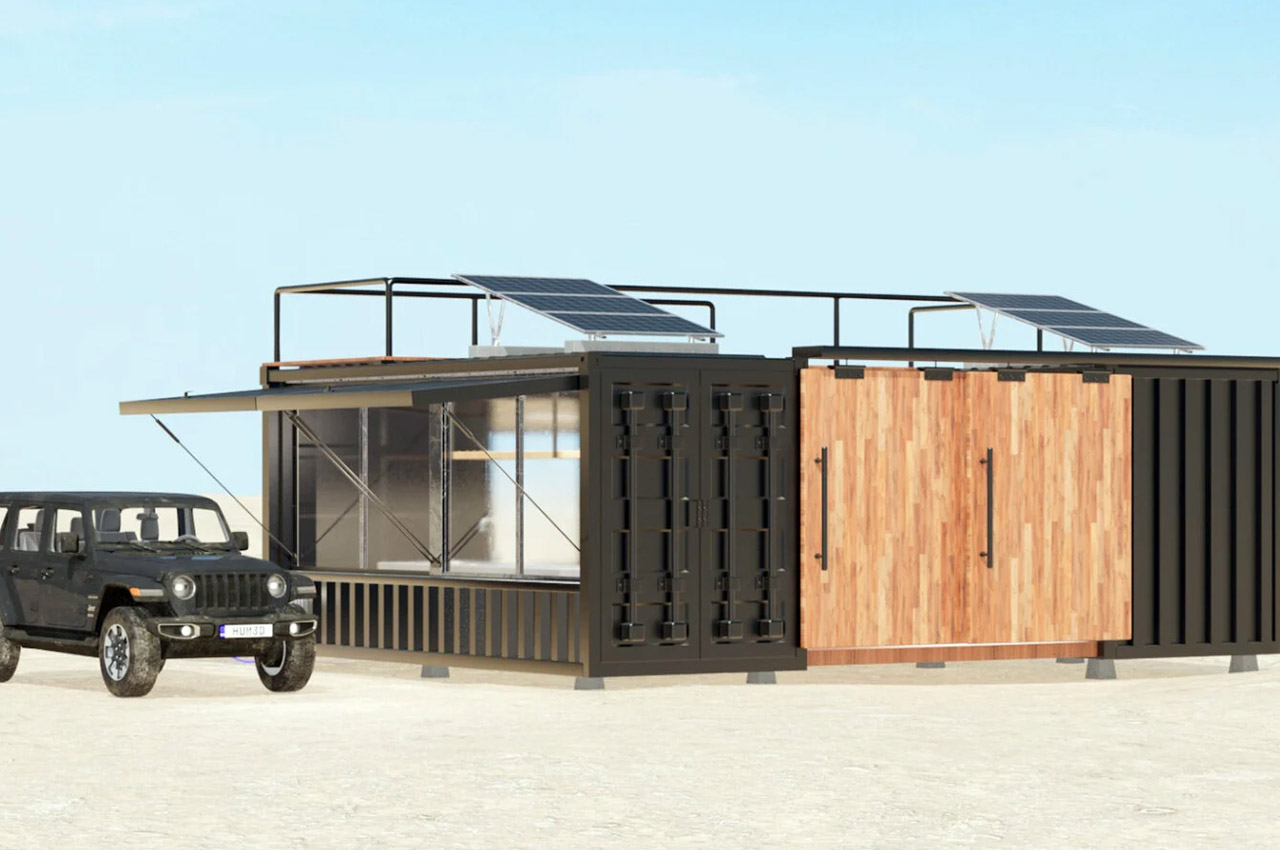
The whole layout of the modular home setup is customizable with options to have a rooftop deck, go for open air-living, or add extensions for more usable space. For now, the concept proposes a bare inside area sans any amenities or furniture for more flexibility in setting up things as the user desires. Other than that, the Jeep Container House is equipped with rooftop solar panels for completely off-grid living in remote regions. When parked, the electric vehicle (Jeep is developing hybrid and all-electric versions currently) is charged via the sustainable system.
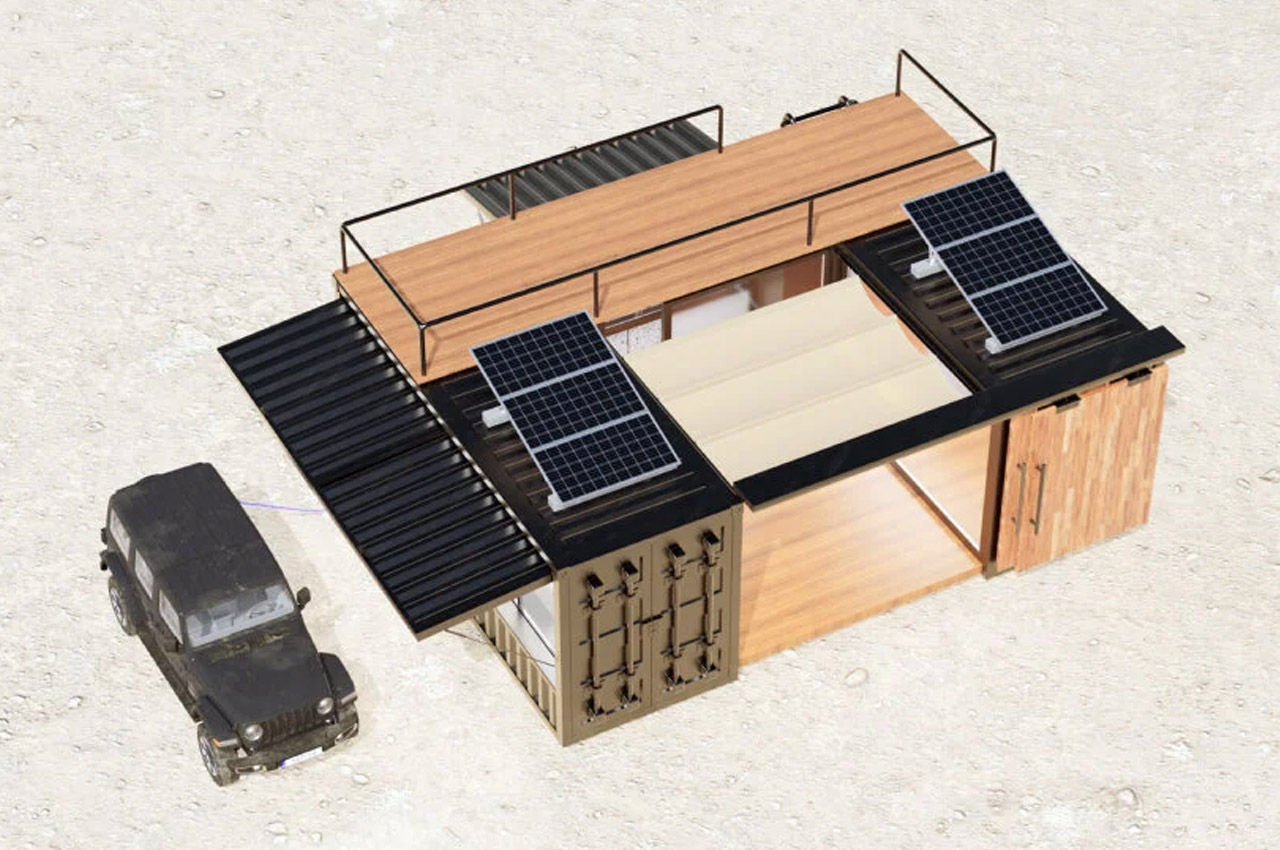
For now, the concept design is in the Jeep study phase and more details will float in once, the maker gets more serious about this idea. For us, right now this concept has the right direction but lacks a bit in long-term practical execution. That’s because the Jeep connection and semi-open design don’t seem to add up (or maybe I’m interpreting things wrongly). The idea could easily be implemented for a container house conversion too without all the complexities.
